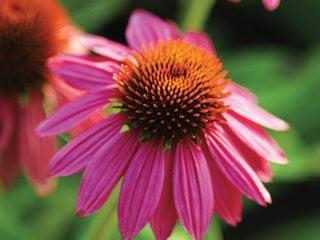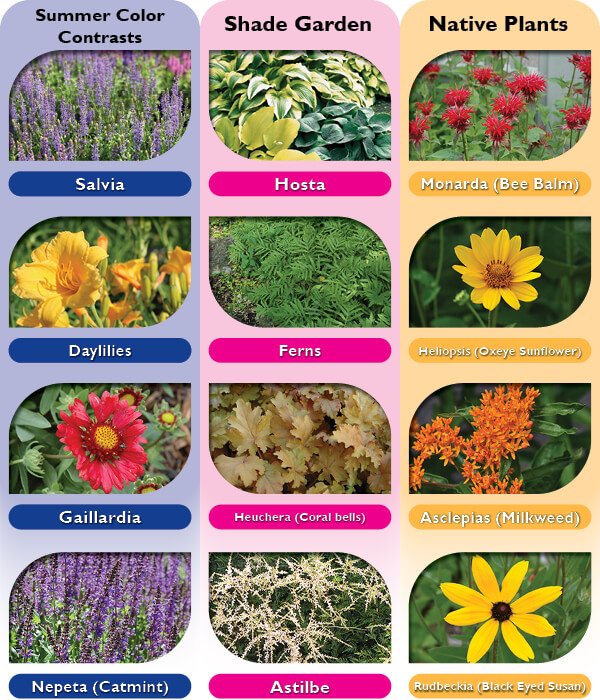Tickseed Companion Plants That Will Make Your Garden Pop
Tickseed Companion Plants That Will Make Your Garden POP
Tickseed (Coreopsis) is a cheerful, easy-to-grow perennial that blooms from early summer to fall. With its bright yellow, orange, or pink flowers, tickseed is a great addition to any garden. But did you know that companion planting tickseed with other flowers can actually enhance its beauty and make your garden even more POP-ular?
In this blog post, we will discuss some of the best companion plants for tickseed. We will also provide tips on how to plant and care for these plants together so that you can create a beautiful and thriving garden.
What are Companion Plants?
Companion planting is a gardening practice that involves planting different types of plants together in order to create a mutually beneficial relationship. Some plants, for example, can attract beneficial insects that help to control pests. Others can improve the soil quality or provide shade for more delicate plants.
When choosing companion plants for tickseed, it is important to consider the following factors:
- Sunlight requirements: Tickseed needs full sun to partial shade. Make sure to choose companion plants that have similar sunlight requirements.
- Water needs: Tickseed is drought-tolerant once established. However, it does need regular water during its first year of growth. Choose companion plants that have similar water needs.
- Soil type: Tickseed prefers well-drained soil. Avoid planting it in heavy clay soil or in areas where the soil is prone to flooding. Choose companion plants that also prefer well-drained soil.
- Pest and disease resistance: Tickseed is generally resistant to pests and diseases. However, some varieties may be susceptible to powdery mildew. Choose companion plants that are resistant to the same pests and diseases as tickseed.
Best Companion Plants for Tickseed
Now that you know what to look for in companion plants, here are some of our top picks:
- Aster: Asters come in a variety of colors, including purple, pink, white, and blue. They bloom in late summer and fall, which makes them a great companion plant for tickseed, which blooms in early summer to fall. Asters also attract beneficial insects, such as butterflies and ladybugs.

- Butterfly weed: Butterfly weed is a native wildflower that attracts butterflies and other pollinators. It blooms in early summer, so it is a good companion plant for early-blooming tickseed varieties. Butterfly weed also prefers well-drained soil, like tickseed.
- Coneflower: Coneflowers are another native wildflower that attracts butterflies and other pollinators. They bloom in late summer and fall, so they are a good companion plant for late-blooming tickseed varieties. Coneflowers also prefer full sun, like tickseed.

- Daylily: Daylilies are hardy perennials that bloom from early summer to fall. They come in a variety of colors, including yellow, orange, pink, and red. Daylilies prefer full sun and well-drained soil, like tickseed.
- Lavender: Lavender is a fragrant herb that blooms in summer. It attracts beneficial insects, such as bees and butterflies. Lavender also prefers full sun and well-drained soil, like tickseed.

- Yarrow: Yarrow is a hardy perennial that blooms in summer. It comes in a variety of colors, including yellow, white, and pink. Yarrow attracts beneficial insects and repels pests. It also prefers full sun and well-drained soil, like tickseed.

How to Plant and Care for Tickseed and Its Companion Plants
Once you have chosen your companion plants, it is time to plant them. Here are some tips:
- Prepare the soil by removing any weeds and rocks.
- Add compost or other organic matter to the soil to improve drainage and fertility.
- Space the plants according to their mature size.
- Water the plants well after planting.
- Fertilize the plants regularly, especially during the growing season.
- Deadhead spent flowers to encourage new blooms.
- Protect the plants from pests and diseases.
With a little care and attention, you can enjoy a beautiful and thriving garden with tickseed and its companion plants for many years to come.
Tickseed (Coreopsis) is a beautiful and easy-to-grow flower that can add a splash of color to any garden. But did you know that companion planting can help your tickseeds thrive?
Companion planting is the practice of planting certain plants together to benefit each other. For example, some good companion plants for tickseed include:
- Echinacea (coneflower): These two plants attract beneficial insects, such as ladybugs and lacewings, which help to control pests.
- Lavender: Lavender helps to repel pests and diseases, and it also has a calming fragrance that can help to attract butterflies and hummingbirds.
- Zinnias: Zinnias and tickseeds have similar growing requirements and can help to fill in spaces in your garden.
- Ammi visnaga: This plant has feathery foliage that helps to disguise the lower leaves of tickseeds, which can sometimes be damaged by pests.
To learn more about companion planting for tickseed, visit Garden Wiki. This website has a wealth of information on the topic, including plant lists, tips, and more.
FAQ of tickseed companion plants
1. What are some good companion plants for tickseed?
Tickseed (Coreopsis) is a sun-loving perennial that can tolerate a wide range of soil conditions. It is a relatively low-maintenance plant that does not require a lot of water or fertilizer. Some good companion plants for tickseed include:
- Gaillardia: This brightly colored flower is also a sun-lover and can help to attract pollinators to your garden.
- Echinacea: This medicinal herb is also a good choice for companion planting with tickseed. It can help to deter pests and diseases.
- Yarrow: This hardy perennial is drought-tolerant and can help to improve the drainage of your soil.
- Coneflower: This tall, showy flower is another good choice for companion planting with tickseed. It can help to attract pollinators and butterflies to your garden.
- Black-eyed Susan: This daisy-like flower is a native North American plant that is easy to grow and care for. It can help to attract pollinators and butterflies to your garden.
2. What are the benefits of companion planting with tickseed?
There are several benefits to companion planting with tickseed. First, it can help to attract pollinators and butterflies to your garden. These beneficial insects can help to pollinate your plants and control pests. Second, companion planting can help to improve the health and vigor of your plants. For example, yarrow can help to improve the drainage of your soil, while echinacea can help to deter pests and diseases. Finally, companion planting can simply make your garden more beautiful and interesting.
3. How far apart should tickseed plants be planted?
Tickseed plants should be planted about 12-18 inches apart. This will give them enough space to grow and spread. If you are planting tickseed in a container, make sure the pot is at least 12 inches wide and deep.
4. How much water do tickseed plants need?
Tickseed plants are relatively drought-tolerant. They will need to be watered regularly during the first few weeks after planting, but once they are established, they can tolerate periods of dry weather. Water them deeply when you do water them, so that the water reaches the roots.
5. What are some common pests and diseases that affect tickseed plants?
Tickseed plants are relatively resistant to pests and diseases. However, they can be susceptible to aphids, spider mites, and powdery mildew. If you notice any of these pests or diseases, you can treat them with insecticidal soap, neem oil, or a fungicide.
Image of tickseed companion plants
- Coreopsis and Echinacea - These two plants have similar flower colors and bloom at the same time, so they make a great combination. Echinacea is also a good companion plant for tickseed because it helps to attract pollinators.

- Coreopsis and Gaillardia - These two plants have contrasting flower colors, which makes them a visually appealing combination. Gaillardia is also a good companion plant for tickseed because it attracts pollinators and deters pests.

- Coreopsis and Black-eyed Susan - These two plants have similar flower colors and bloom at the same time, so they make a great combination. Black-eyed Susan is also a good companion plant for tickseed because it attracts pollinators and deters deer.

- Coreopsis and Yarrow - These two plants have different flower colors, but they complement each other well. Yarrow is also a good companion plant for tickseed because it helps to deter pests.

- Coreopsis and Coneflower - These two plants have similar flower colors and bloom at the same time, so they make a great combination. Coneflower is also a good companion plant for tickseed because it attracts pollinators and deters deer.

Post a Comment for " Tickseed Companion Plants That Will Make Your Garden Pop"